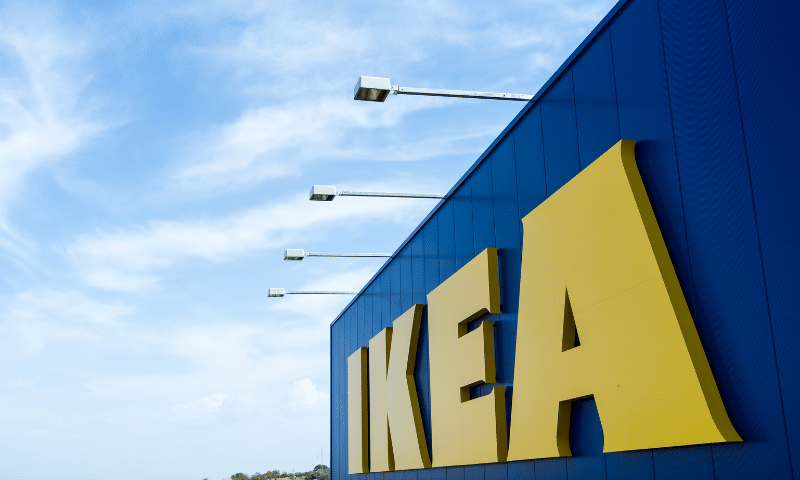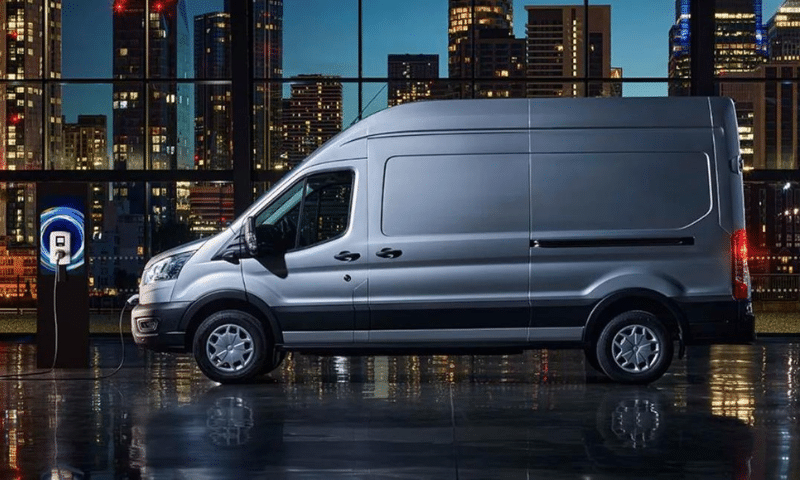IKEA Group, the world’s largest furniture retailer, is well on its way to transitioning to an electric, zero-emissions commercial delivery and service fleet. Starting in 2018, they began trials of electric last mile deliveries and assembly services. By 2025, they plan to have 100% of their transport for customer deliveries and services using zero-emission solutions.

IKEA certainly isn’t the only company planning the switch to electric commercial vehicles. In fact, Amazon, AT&T, DHL, Fedex, PepsiCo and Verizon are also among the many major corporations investing in electric or low-emission fleets.
There are many compelling reasons for commercial fleets to go electric. Below we will take a look at IKEA’s ‘climate positive’ strategy in relation to its delivery and assembly fleet and the benefits of making the switch to electric commercial vehicles. We’ll also discuss some of the challenges associated with the switch and how IKEA is addressing them.
IKEA's 'Climate Positive' Strategy
KEA is no stranger to sustainability initiatives. In fact, the Swedish mega-retailer has been publically committed to sustainability since 2012 when it released its People and Planet Positive sustainability plan. The plan focuses on three areas: “a more sustainable life at home for consumers, resource and energy independence for the company, and a better life for people and the communities touched by IKEA”.
So, it’s no surprise that IKEA has set some ambitious climate goals. IKEA has pledged to become ‘climate positive’ by 2030. This means that they will not only offset all of their emissions but also remove more carbon from the atmosphere than they produce. This is all to be achieved without relying on carbon offsetting (you can read more about the controversy surrounding carbon offsetting here).
To help fulfill this commitment, IKEA has set some ambitious sustainability targets. One of these is to have 100% of their home delivery and service vehicles be electric or zero-emission by 2025.
IKEA has already made great strides in this area. IKEA was the first home furnishing company in Australia to have EV last mile deliveries and assembly services, commencing trials in 2018. The trial, undertaken across IKEA stores in Victoria, saw a total of 3,500 deliveries to IKEA customers made using electric trucks. The vehicles used were outsourced through partner companies like Kings Transport and Logistics – although the company has since invested in the research and development of new electric vehicle (EV) prototypes for home deliveries.
Outside of Australia, IKEA has also made good progress toward its transport targets. By 2020 all home deliveries in central Amsterdam, Los Angeles, New York, Paris and Shanghai were by EV or other zero-emission solutions. In 2021, the company also invested in 12 heavy-duty EVs to operate within some of its transport flows in China.
IKEA has made it clear that the realisation of its electrification targets will only be possible with collaboration across the value chain to scale up the development of infrastructure, technology, sustainable energy sources and financing solutions. Because of this, the company has intensified its efforts to drive change at the policy level.
In 2020, IKEA joined the World Economic Forum’s Road Freight Zero (RFZ) initiative to be an active part of the electrification movement. In Europe, the company is a member of the European Clean Trucking Alliance, which drives the development, implementation and support of future-proof policies, programs and initiatives to create an ecosystem that shifts from fossil-fueled vehicles to vans and trucks with zero tailpipe emissions.
While IKEA is well on its way to achieving its targets, Marcus Baumgartner, Customer Fulfilment Manager at IKEA franchisee Ingka Group knows that there’s still a lot of work to be done;
“It will require all of us – within our company, transport companies, manufacturers, energy companies and others – to work together to find new solutions. And not just with existing partners, but new partners as well, such as new platforms for sharing vehicles and infrastructure, start-ups of different kinds, charging experts, everyone passionate about making last-mile delivery better for both people and planet”, he said.
“This is not as simple as replacing a combustion engine truck with an electric truck, we need to find new ways of working, too. Zero-emission deliveries are an essential part of our transformation – and I’m excited to be along for the ride!”
The Benefits of Electric Commercial Vehicles

2022 Ford E Transit Van, Image Source: Carsguide
There are many benefits to using electric commercial vehicles. Below are just a few:
Zero emissions: electric vehicles produce zero emissions, which is great news for the environment and our health. Considering that road transport is responsible for almost three-quarters of transport emissions, electric vehicles offer a cleaner, greener way to get around. For any company mindful of its environmental impact, electric vehicles are a great option.
Lower fuel and maintenance costs: electric vehicles are significantly cheaper to operate than petrol or diesel vehicles. Given that fuel costs are skyrocketing, this can make a big difference to your bottom line. Electric vehicles also have far fewer moving parts than internal combustion engine (ICE) vehicles, which means they require far less maintenance. This will undoubtedly save any business considerable money in the long run.
Fewer breakdowns: EVs are bristling with innovative technology and, while they still do break down, it’s far less often than petrol or diesel cars. Electric engines are more reliable than petrol or diesel motors because they have fewer moving parts. For a business that relies on its vehicles to get around on time, this is a huge advantage.
Challenges of Commercial Transport Electrification
Despite the many benefits of electric commercial vehicles, there are also some challenges to making the switch from traditional petrol or diesel cars. The main challenges are listed below.
Cost: Electric vehicles can be more expensive to buy than traditional ICE vehicles. However, they are cheaper to operate and maintain in the long run, so it’s important to consider the whole life cycle of a vehicle when making your decision.
Infrastructure: Charging infrastructure is still in its infancy in some regions of the world (Australia included), which means it can be difficult to find a place to charge your electric vehicle. While range anxiety is a genuine concern, many governments are investing significant sums of money in EV infrastructure, so this is likely to improve in the coming years.
Availability of vehicles: While new models are being released every year, the availability of electric commercial vehicles is still relatively limited – especially in the Australian market where there are fewer government incentives to support uptake.
Despite these challenges, commercial transport electrification is the way of the future and IKEA is proving that it can be done. Making the switch to electric commercial vehicles is a great way for businesses to reduce their environmental impact, save money on fuel and maintenance costs, and improve business operations. With IKEA leading the way, we can expect to see many more businesses making the switch in the coming years.
Our professional solar installers in Melbourne will assess and determine your energy needs. We customise a solar panel system in Melbourne to fit the roof size of your property, ensuring you receive the most suitable solar panel system for your Melbourne home, meeting to property’s energy requirements.





































